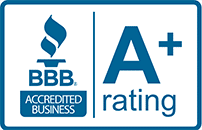Understanding The Reagan Tokes Act and How It Affects Criminal Defense Cases in Ohio
Legislative changes can often have a big impact on how criminal cases are handled and how legal professionals operate. The Reagan Tokes Act, born out of a tragic incident, was introduced into Ohio law with the goal of reforming and enhancing public safety, particularly in the area of supervision and monitoring of offenders post-release. The Reagan Tokes Act, is meant to create a balance between offender rehabilitation and public safety and can dramatically impact the length of time a person who has committed a serious felony will be incarcerated depending on their behavior while in jail and increases the complexity of both plea and sentencing hearings.
What Is The Reagan Tokes Act?
Passed into Ohio law in 2019, The Reagan Tokes Act emerged in response to a heartbreaking case involving the abduction and murder of a young college student in 2017. The man responsible for the crime had been out on parole at the time of the offense. During his incarceration he was involved in over 50 institutional violations and it was known that upon release he would pose a risk to the public but because he had a defined prison sentence he was required to be released once he had served his time. This brought to light a need for stricter guidelines related to prison terms, and post-release scrutiny of inmates in an effort to increase public safety and safeguard the rights of individuals involved in the criminal justice system. The Act reintroduced the use of indefinite prison sentencing in Ohio.
The law impacts people who have been convicted of an F1 or F2 felony on or after March 22, 2019, and places a heightened level of scrutiny on individuals who are to be released from incarceration, and on those who are on parole or post-release control. From a defense perspective, this increased focus necessitates a thorough examination of the procedures surrounding parole and the potential impact on clients navigating reentry into society.
How The Reagan Tokes Act Impacts Individuals
The Reagan Tokes Act exists to try to keep dangerous offenders from being able to commit further crimes. Individuals who are convicted of a F-1 or F-2 offense where the offense is categorized as ‘qualifying’ will be subject to the Reagan Tokes Act. All qualifying offenses will have a minimum and maximum prison sentence determined using an established formula as per R.C. 2929.144
What Is A Qualifying Offense?
Ohio Law states that all F-1 and F-2 class felonies that do not carry a life sentence qualify for indefinite prison sentencing. The offense does not have to be violent in nature, contain an enhancement clause, or have been labeled as qualifying at the time of indictment. Capital offenses that already require a term of life imprisonment are already considered to carry an indefinite term, which is why they do not qualify for the Reagan Tokes Act.
Lower felony offenses such as F-3, F-4, and F-5 offenses are considered non-qualifying for the Reagan Tokes sentencing act. Anyone who happened to be charged before March 22, 2019, would also not qualify for this act.
Offenders who have committed a qualifying felony offense are now subject to an indefinite term of imprisonment. The bill has replaced the word sentence with the words prison term to describe the length of a person’s imprisonment and now imposes a minimum and maximum amount of time an individual can be incarcerated.
How Are The Minimum and Maximum Prison Terms Determined?
A trial judge is responsible for imposing a prison sentence on a person who has been convicted of a crime. According to the new guidelines of the Reagan Tokes Act determining a minimum sentence is dependent on whether the individual has been found guilty of one offense, a series of offenses with consecutive terms or a series of offenses with concurrent terms. The judge will select a minimum term from a set range of years. For an F-1 offense the range is 3-11 years, for an F-2 offense the range is between 2-8 years. This is the least amount of time that a convicted individual will be required to serve.
To determine the maximum prison term that a person may serve according to the new Reagan Tokes law it is the minimum term plus 50% for all qualifying F-1 or F-2 offenses. For example if the defendant is sentenced on one count on an F-1 offense and the judge selects an 8 year minimum, then the maximum would be 8 plus 4 (half of the minimum term) making the maximum term 12 years. The indefinite range of this prison sentence would be 8-12 years.
Imposing prison sentences becomes more challenging in cases where an individual is found guilty of multiple offenses with concurrent sentences. In these cases the minimum sentence will be determined by the longest minimum sentence a judge chooses the offenses. For example if a person is convicted of a F-1 with a 6 year minimum, and an F-2 with an 8 year minimum then the prison term’s minimum would be 8 years because it was the longer of the two sentences even though it was the less serious charge.
Determining the maximum sentence is even more confusing because the 50% used to determine the maximum part of the term is determined by the most serious offense, not the longest minimum sentence. So in the example above it would be 50% of the F-1’s 6 year minimum (3 years) because it was the more serious of the two offenses. In short, the individual in this example would end up with an indefinite sentence of 8-11 years in prison.
There can be other extenuating circumstances that will impact the prison term when it comes to the Reagan Tokes Act such as mandatory prison terms for certain offenses, or if the individual has been given a specification such as major drug offender, repeat violent offender, etc. It is often best to speak with your criminal defense attorney to get a better sense of what sort of prison term you may expect should you be found guilty.
How Is It Determined If An Individual Will Serve Their Minimum or Maximum Sentence?
The Department of Rehabilitation and Corrections or the DRC is responsible for deciding if a person is ready to be released from prison. The default release date for indefinite prison terms is the minimum sentence. So if an individual is serving 6-9 years then the presumptive release date is at the end of the minimum sentence. This can be altered however if an individual demonstrates behavior while incarcerated that leads the DRC to believe it would be in the public’s best interest for this individual to remain behind bars.
Behaviors that would extend a person’s incarceration according to the Reagan Tokes Act include:
- The offender violates institutional rules that compromised prison security, or the safety of staff or inmates, or that involved physical harm or threat of physical harm to staff or inmates, or committed a violation of law that was not prosecuted and that those infractions or violations demonstrate a lack of rehabilitation
- The offender’s behavior while in prison suggests a continued threat to society.
- The offender is classified as a security level 3 or higher.
- The offender refused to participate in a majority of the rehabilitative programs and activities
recommended by DRC - The offender does not have a fixed address to reside in after release and does not plan to reside in a halfway house, reentry center, or licensed community residential center.
Other Elements of the Reagan Tokes Act
One of the other major components of the Reagan Tokes Act is its expanded use of GPS monitoring systems of individuals who have been released from prison. These monitoring systems come with many challenges associated with this technology. Privacy concerns, potential inaccuracies, and the need for a nuanced understanding of the limitations of GPS tracking are all elements that must be considered for people who are required to wear these devices.
Contact A Criminal Defense Attorney in Ohio Near You
The Reagan Tokes Act, while undoubtedly a response to a tragic event, introduces a set of challenges and considerations for criminal defense lawyers. Balancing the state’s goals of offender rehabilitation and public safety, while also protecting the individual rights of a person requires a nuanced and vigilant approach. As legal professionals we have the experience to navigate the implications of this legislation, and to fight for a fair outcome for our clients.
Contact Joslyn Law Firm today for a consultation about your felony charge in Columbus, Ohio. Hiring an Ohio criminal defense lawyer who has experience with these types of cases can be crucial to protecting your rights and freedoms. Our legal team will use our experience and passion for defending the rights of the accused in fighting against these charges.
Call (614) 444-1900 for a consultation about your felony charges in Franklin County or another Ohio county, including Pickaway County, Madison County, Delaware County, Licking County, and Fairfield County.















